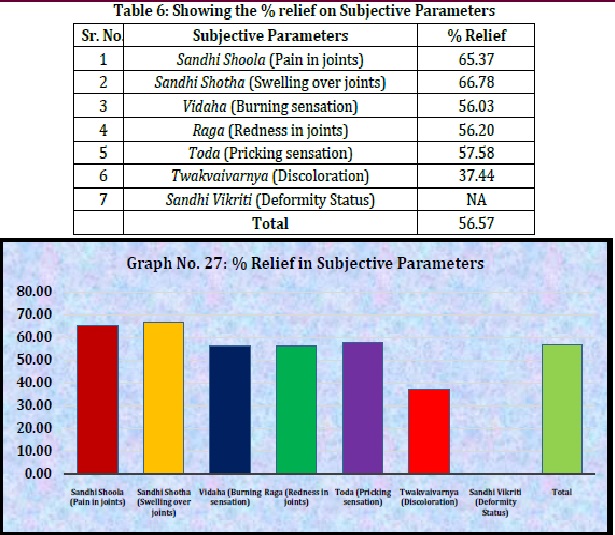Clinical Evaluation of the Role of Singhasyadi Kwatha in the Management of Vatarakta (Gout)
DOI:
https://doi.org/10.47070/ayushdhara.v10i5.1392Keywords:
Uttana Vatarakta, Purine metabolism disorder, Gouty arthritis.Abstract
Vatarakta is a disease where both Vata and Rakta are afflicted by distinct etiological factors. Vatarakta is a Vatapradhana Tridoshaja Vyadhi in which Rakta is main Dushya. In modern science, it corresponds to gout. While synthetic drugs offer quick relief, they often cause adverse reactions. As a result, many are turning to Ayurveda, which has effective formulations for Vatarakta and a proven track record, providing hope for better relief to those suffering. Aims: Clinical evaluation of ‘Singhasyadi Kwatha’ in the management of Vatarakta (gout). Materials & Methods: In this interventional clinical trial, the purpose is to assess the treatment efficacy of Singhasyadi Kwatha for Vatarakta (gout). The study involves a randomized allocation of 30 patients into a single group with open label masking. The assignment is parallel, determined through computer-generated randomization. The study follows a prospective timeline with a total study period of 30 days for each patient. There is preparatory period of 7 days followed by 45 days treatment period. After completion of treatment, participants were monitored during a follow-up period occurring every 15 days to evaluate both efficacy and safety of the intervention. Result: Overall, the drug exhibited significant relief for several key symptoms including Sandhi Shoola (pain in joints), Sandhi Shotha (swelling of joints), Vidaha (burning sensation), Raga (redness), Toda (pricking sensation), Twakvaivarnya (discoloration of skin), Vikriti (deformity of joints). Although all the symptoms didn’t show statistically significant improvement, the findings of study collectively demonstrate the positive impact of the drug on Vatarakta symptoms highlighting its potential as a therapeutic intervention for the condition under investigation. Conclusion: this research emphasizes the importance of utilizing traditional herbal remedies in treating non communicable conditions like Vatarakta. This herbal formulation can serve as potent alternatives or complementary options alongside modern medications, showcasing their effectiveness in managing the disease.
Downloads

Downloads
Published
Issue
Section
License
Copyright (c) 2023 AYUSHDHARA

This work is licensed under a Creative Commons Attribution-NonCommercial-ShareAlike 4.0 International License.


